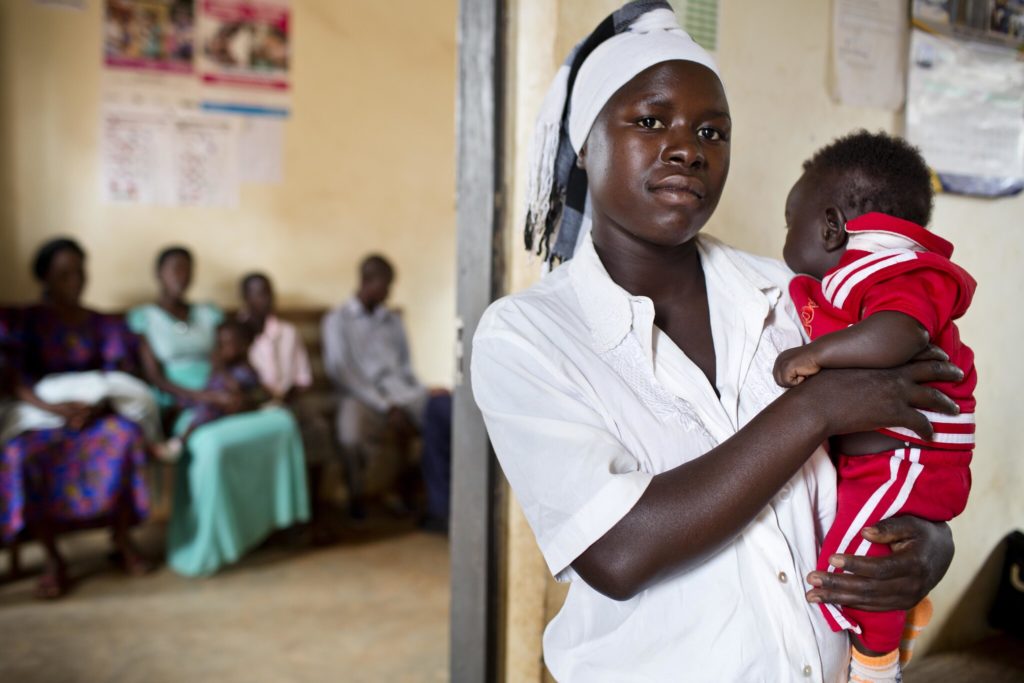Published: 01/04/2022

Every month, we invite an esteemed colleague from around the world to share global health learnings, experiences, and insights from their work. This month, Dr. Abel Kakuru, an epidemiologist with the Infectious Disease Research Collaboration in Uganda, shares insights from his ongoing work to develop new tools to boost childhood immunity to malaria.
The recent WHO recommendation for the widespread use of the RTS,S vaccine promises a valuable new tool in the fight against malaria that could help save tens of thousands of young lives each year. However, with limited funding and infrastructure, global distribution could take years to achieve. At the same time, the vaccine appears to be less effective in countries with high transmission rates, like Uganda. Dr. Kakuru is part of a team that includes Global Health Faculty Fellow Prasanna Jagannathan. They are studying alternative ways to create vaccine-like immunity in pregnant women and now children. Read on to learn more.
Studying a New Tool to Boost Childhood Immunity to Malaria
By Dr. Abel Kakuru, Epidemiologist at the Infectious Diseases Research Collaboration
Plasmodium falciparum malaria is one of the leading causes of sickness and death globally in children under five years of age. Children residing in malaria-endemic areas usually develop immunity after suffering repeated episodes of malaria. The use of insecticide-treated nets remains one of the major interventions for preventing the illness in children, but the development of resistance to pyrethroid, the insecticide used in mosquito nets, is threatening its effectiveness. This requires new interventions.
A common strategy for preventing malaria in pregnant women is Intermittent preventive treatment (IPT), the practice of giving curative doses of antimalarials at specified time intervals to healthy persons. Now, it is emerging as a promising strategy for the prevention of malaria in children.

While there are concerns that IPT may reduce exposure to malaria, thereby delaying the development of immunity, some studies have shown that conducting this treatment with highly effective antimalarials can induce a vaccine-like reduction in the risk of malaria in the post-treatment period. This suggests that that IPT may in fact boost the development of malaria immunity.
To test this hypothesis, investigators from Stanford University, University of California San Francisco, Makerere University, Infectious Diseases Research Collaboration and Karolinska Institute are conducting an NIH-funded MIC-DroP (Modifying Immunity in Children with Dihydroartemisinin-Piperaquine) study.
This is a double-blind randomized controlled trial in nearly 1,000 children born to pregnant women without HIV living in Busia, Uganda. The mothers of these children have been taking part in a clinical trial comparing the efficacy of monthly doses of different anti-malarials. Children will be enrolled at 4-8 weeks and will be randomized in the ratio of 1:1:1 to receive monthly antimalarial treatments from 8 weeks to one year of age, monthly treatments from 8 weeks to two years, or placebo treatments from 8 weeks to two years. We will follow the children up to four years of age, reviewing the administration of the drugs monthly and for clinical assessment.
We will be monitoring the primary outcome: The incidence of malaria from two to four years of age, after the chemoprevention intervention has stopped. We will compare the incidence of malaria from two years to four years of age among children who received different antimalarial chemoprevention regimens from 8 weeks to 2 years of age. We will also study the impact of antimalarial chemoprevention on infant immune development.
This study will help us better understand whether the use of highly effective artemisinin combination therapies for the prevention of malaria both during pregnancy and in early childhood is associated with the development of better immunity to malaria in children. If successful, this therapy could provide a new, life-saving tool in the fight against malaria that we believe could be easily implemented and scaled up.